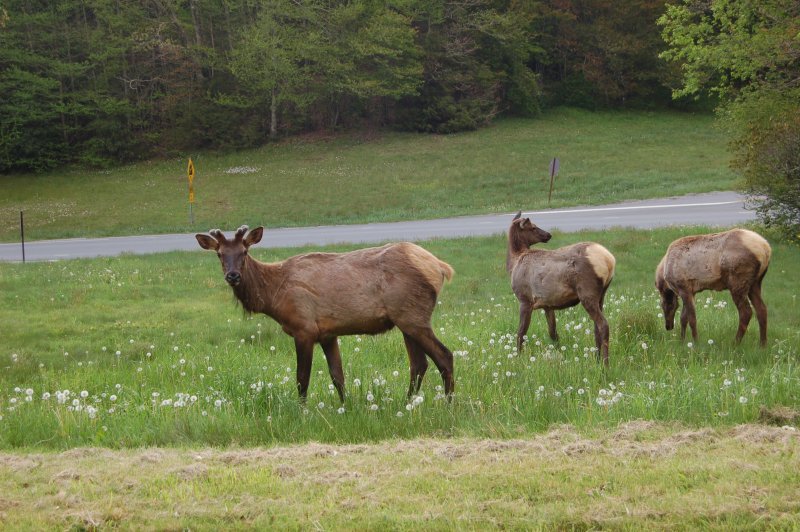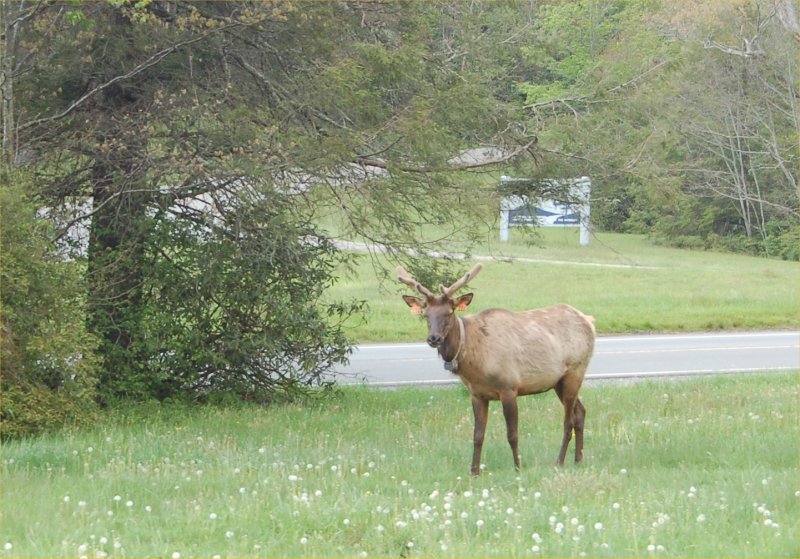Elk in Kentucky-A Conservation Success.
Posted: Mon Aug 05, 2013 5:56 pm
I watching the film "Killing Season" the other day with Deniro and Travolta in. When they speak of going after Elk, I thought I would check if there were Elk in Kentucky. Till then I did not know that there were Elk in Kentucky.
This is what I found. A shining example of effective conservation and wildlife management.
http://www.rmefnky.org/kyelkherd.HTML

Best-
Vikram
This is what I found. A shining example of effective conservation and wildlife management.
http://www.rmefnky.org/kyelkherd.HTML

The Rocky Mountain Elk Foundation was created in 1984 by four Montana elk hunters. In the twenty years since its’ creation, the RMEF has grown to be one of the most successful Conservation Organizations in the United States. Today the Foundation has over 138,000 members, with Chapters in all 50 states and Canada. The American Institute of Philanthropy consistently recognizes the RMEF as one of America’s most efficient conservation organizations, with 94 cents of every dollar raised going directly to on-the-ground conservation achievement.
Since 1984, the Foundation, which is headquartered in Missoula, Montana has raised over $458 million and has conserved or permanently protected over 3.9 million acres of wildlife habitat. In 2001, the RMEF launched a five year effort known as the Pass It On campaign. The ambitious goals of the 5 year campaign are to raise $250 million, conserve 2 million acres and restore elk to historic ranges, leaving an elk country legacy for future generations.
In 1996 the Rocky Mountain Elk Foundation pledged over $1.4 million to the state of Kentucky’s elk restoration project. On December 18, 1997, seven elk that had been captured in Western Kansas were released at the Cyprus Amax Wildlife Management Area in Eastern Kentucky. This was the first of a series of releases that continued thru the winter of 2002. The plan originally contemplated releasing 1,800 elk at a rate of 200 per year for 9 years across a 15 county restoration zone. The translocations were discontinued in 2002, with just over 1,500 elk having been released at 8 different sites, 500 in the final 12 months of the releases. Since 1997, the Foundation has increased it’s funding of the project to $2,000,000.
The elk have thrived in Kentucky. They are achieving a 90% breeding success rate, and a 92% calf survival rate. The absence of predators, relatively mild Kentucky winters and abundant food sources have not only contributed to the remarkable population growth, but also account for the fact that the Kentucky elk are on average 15% larger than elk found in western states. By July 2000, Kentucky had the largest free ranging, wild elk herd east of Montana.
The Kentucky Elk Restoration project conducted by the Kentucky Department of Fish and Wildlife with the support of the Rocky Mountain Elk Foundation is regarded as one of the most successful wildlife reintroduction efforts ever conducted.
The original Kentucky elk population target of 7,400 will be achieved in 2008, 11 years ahead of schedule. Because of the virtual absence of elk predators in Kentucky, it is contemplated that, approximately 1,500 elk hunting permits a year will have to be issued by 2008 just to maintain the herd at the 7,400 target level.
Until 2003, a 12 county buffer zone surrounded the restoration zone. Elk hunting has been tightly regulated in the restoration and buffer zones, with only 12 elk hunt permits being issued in 2001, ’02 and ’03. In 2004 the buffer zone has been eliminated and elk that travel out of the 15 county restoration zone may be hunted with a deer tag. Also, in 2004 the number of elk hunt permits issued for hunting in the restoration zone has been increased from 12 to 40. By allowing liberal hunting outside of the restoration zone, and controlled hunting within the zone, the KDF&W hopes to concentrate the population in the targeted restoration zone.
The Kentucky elk restoration project would not have made it off the drawing board without the financial support provided by the Rocky Mountain Elk Foundation. The RMEF is a membership based organization. Funds are raised from member dues, philanthropic donations, corporate sponsorships, merchandise sales, grants, raffles, and most prominently, banquets.
Now that the elk are well established and flourishing in Kentucky, the Foundation has launched a new initiative, The Appalachian Wildlife Initiative, which will focus on permanent habitat conservation. Habitat that will benefit not only elk, but varied wildlife including whitetail deer, black bear, wild turkey, quail, grouse, and other small game species. By conserving this habitat, the volunteers and supporters of the RMEF will insure that our children’s children will be able to experience the thrill of an elk’s bugle in Kentucky Septembers from now on.
Best-
Vikram

